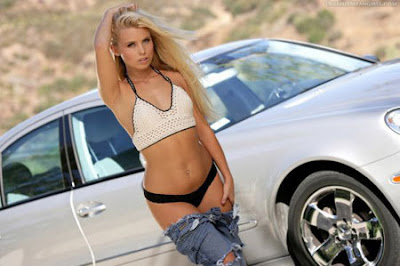|
|
|---|
Friday, November 16, 2007
The S5’s exterior appeal is more than skin-deep. The keen observer will notice that the front wheels seem closer to the car’s nose than on most other Audis. This reduced overhang not only enhances the S5’s looks but also reflects some major changes under the coupe’s sexy skin.
The S5 is the first Audi to arise from the company’s B8 architecture, which will also underpin the next-gen A4—scheduled to appear at the Frankfurt auto show in September—as well as future A6 and even A8 models. Besides the usual improvements in structural stiffness and crashworthiness, there are two major areas where the B8 differs from the current A4/A6 platform. That reduced overhang at the nose reflects a transaxle whose front differential is about six inches farther forward than in other Audis. The engine is still completely ahead of the axle, but only just. The front differential is now adjacent to the transmission bell housing (on the right), and the cross-shaft that feeds the left half-shaft barely clears the flywheel. In fact, the clutch is attached to a second flywheel behind this cross-shaft.
The second key change is the migration of the steering rack from behind the engine to a more conventional position below it, which helps lower the car’s center of gravity. Otherwise, the front suspension is a sophisticated aluminum control-arm layout with two separate links forming the arms to achieve superior geometry. The rear wheels are attached to a multilink suspension that’s similar to what is used on current A4s and A6s.
The S5 is the first Audi to arise from the company’s B8 architecture, which will also underpin the next-gen A4—scheduled to appear at the Frankfurt auto show in September—as well as future A6 and even A8 models. Besides the usual improvements in structural stiffness and crashworthiness, there are two major areas where the B8 differs from the current A4/A6 platform. That reduced overhang at the nose reflects a transaxle whose front differential is about six inches farther forward than in other Audis. The engine is still completely ahead of the axle, but only just. The front differential is now adjacent to the transmission bell housing (on the right), and the cross-shaft that feeds the left half-shaft barely clears the flywheel. In fact, the clutch is attached to a second flywheel behind this cross-shaft.
The second key change is the migration of the steering rack from behind the engine to a more conventional position below it, which helps lower the car’s center of gravity. Otherwise, the front suspension is a sophisticated aluminum control-arm layout with two separate links forming the arms to achieve superior geometry. The rear wheels are attached to a multilink suspension that’s similar to what is used on current A4s and A6s.
Labels: Automobiles Reviews
Subscribe to:
Post Comments (Atom)






















0 comments:
Post a Comment